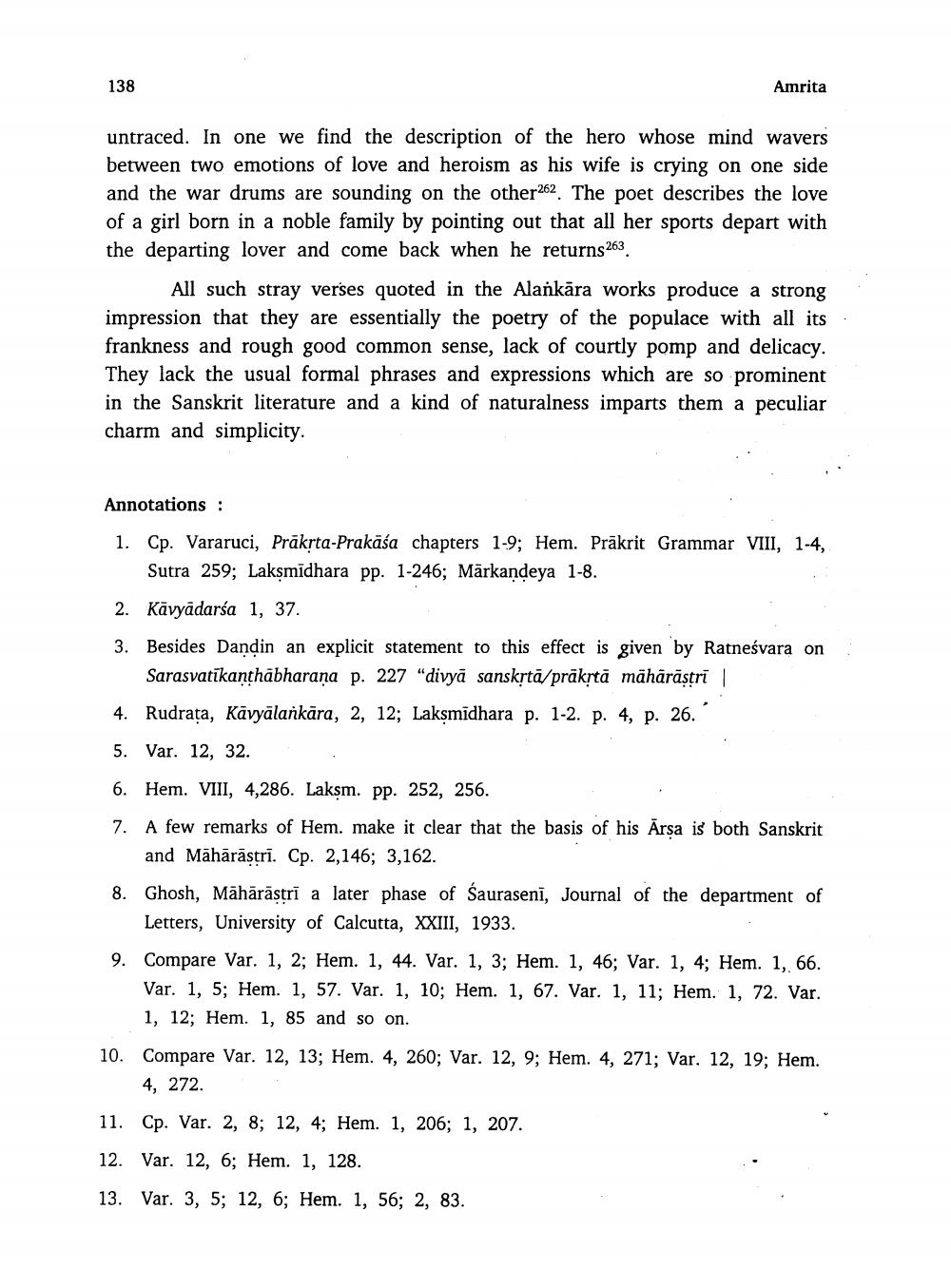________________
138
Amrita
untraced. In one we find the description of the hero whose mind wavers between two emotions of love and heroism as his wife is crying on one side and the war drums are sounding on the other262. The poet describes the love of a girl born in a noble family by pointing out that all her sports depart with the departing lover and come back when he returns263,
All such stray verses quoted in the Alankāra works produce a strong impression that they are essentially the poetry of the populace with all its : frankness and rough good common sense, lack of courtly pomp and delicacy. They lack the usual formal phrases and expressions which are so prominent in the Sanskrit literature and a kind of naturalness imparts them a peculiar charm and simplicity.
Annotations :
1. Cp. Vararuci, Prakrta-Prakāśa chapters 1-9; Hem. Prākrit Grammar VIII, 1-4,
Sutra 259; Lakşmīdhara pp. 1-246; Mārkandeya 1-8. 2. Kāvyādarśa 1, 37.
3. Besides Dandin an explicit statement to this effect is given by Ratneśvara on
Sarasvatīkanthābharana p. 227 "divyā sanskrtā/praktä mähārāstri 4. Rudrața, Kāvyālankāra, 2, 12; Laksmīdhara p. 1-2. p. 4, p. 26. 5. Var. 12, 32. 6. Hem. VIII, 4,286. Lakşm. pp. 252, 256. 7. A few remarks of Hem. make it clear that the basis of his Ārsa is both Sanskrit
and Māhārāstrī. Cp. 2,146; 3,162. 8. Ghosh, Māhārästri a later phase of Sauraseni, Journal of the department of
Letters, University of Calcutta, XXIII, 1933. 9. Compare Var. 1, 2; Hem. 1, 44. Var. 1, 3; Hem. 1, 46; Var. 1, 4; Hem. 1, 66.
Var. 1, 5; Hem. 1, 57. Var. 1, 10; Hem. 1, 67. Var. 1, 11; Hem. 1, 72. Var.
1, 12; Hem. 1, 85 and so on. 10. Compare Var. 12, 13; Hem. 4, 260; Var. 12, 9; Hem. 4, 271; Var. 12, 19; Hem.
4, 272. 11. Cp. Var. 2, 8; 12, 4; Hem. 1, 206; 1, 207. 12. Var. 12, 6; Hem. 1, 128. 13. Var. 3, 5; 12, 6; Hem. 1, 56; 2, 83.




